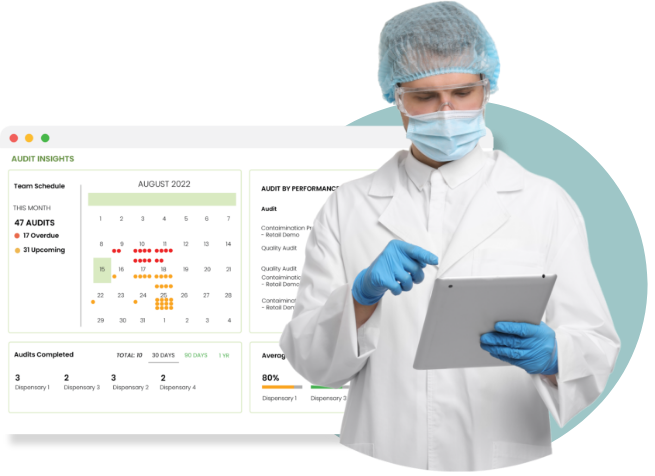Author: Ben Hartman | June 26, 2024 | 4 Min Read
5 Ways to Improve Food Safety Today
-1.jpg?width=1200&height=520&name=food-manufacturing-plant-%20(1)-1.jpg)
Having a robust food safety program not only helps protect a company’s customers and employees, it also makes good business sense. The right food safety plan can help mitigate costly workplace hazards and make companies less likely to face a (very) costly food safety recall.
However, considering all of the operational risks and the regulatory obligations food companies face, ensuring that a workplace is safe and compliant can be quite challenging.
Last week, Rootwurks spoke to Stacey Brown Food Safety Auditor and Consultant with ASI Food Safety, about some of the key steps companies can take to improve food safety.
1. Make sure you’re committed
The steps needed to master food safety can be complex and the stakes are high. Getting it right takes the full commitment of management and employees, Brown said.
“The first thing is that you absolutely have to be committed to food safety. There has to be some sort of commitment outside of “the regulators that are requiring me to do this.” Because whenever you’re doing something because you’re required to do it you do it begrudgingly,” Brown said.
Brown said that companies must look at food safety efforts as a business improvement that will pay dividends and not as a chore that requires a bare minimum of effort just to check off the requisite boxes.
2. Make sure everyone “understands the why”
Management must make a commitment to food safety but employees must also receive the training necessary to know and understand their role.
“Even when the leadership and supervisors are on board [for food safety] the employees might have no idea what’s going on or they know their role but not how it affects the bigger picture,” Brown said, adding “they understand what they’re supposed to do but they don’t understand the why.”
Brown said that companies must ensure that employees understand the importance of the safety processes they perform, why they matter, and how to tell if things aren't being done correctly.
“Having everyone understand why is a key element to having a robust food safety program. Understand the why and the do will happen. If you don’t understand why you’re doing something you won’t understand when it’s not going right.”
3. Focus on continuous improvement
Another key aspect of training is making sure to do it repeatedly.
How often is up for debate.
“People say that you need to do the minimum of refreshing your training once a year but that seems low to me. Training should be done constantly and continuously,” Brown said.
She said that people are creatures of habit and if they aren’t refreshing their training they can miss potential issues in the workplace.
Brown said that companies should incorporate regular quizzes and even just daily questions about safety issues to keep things fresh. This approach has a better chance of success than just cramming for a test once a year.
“There’s information dumping and then there’s training. Most places do information dumping and few do good training.”
4. Document what you do and when you do it
For safety and compliance-related tasks, keeping detailed records is key.
“The regulatory agencies and your clients and customers want you to trust but verify.
Prove that you are doing what you're supposed to do. If you're supposed to be cleaning after every use of the equipment you want to document that you've done that,” Brown said.
Furthermore, keeping detailed records means you’ll know which tasks you’ve already performed. This keeps you from repeating tasks unnecessarily and helps confirm that tasks are carried out consistently in the same fashion, every time.
“If you have a good working environment and you’re maintaining your records you’re probably going to have a good system.”
5. Get a consultant
Food safety isn’t rocket science, but it can be pretty complex. And considering all the other myriad daily tasks that food companies have to perform, it can help to have some guidance charting the right course.
According to Brown, hiring a consultant can help a great deal during the initial process of building a food safety plan and also when setting up a new facility for your daily operations.
“A lot of times it's so overwhelming and that’s why you want to get a consultant. We’ll write everything up but then you have to execute.”
To hear more tips on food safety, check out the Rootwurks webinar we held back in April, How Food Safety Can Save You Money, streaming on-demand here.
Contributors

Ben Hartman
From HACCP certification to the basics of hygiene, our on-demand courseware has you covered.


.jpg?width=893&height=467&name=Linkedin%20(20).jpg)



.jpg?width=120&height=80&name=Baby%20(1).jpg)

